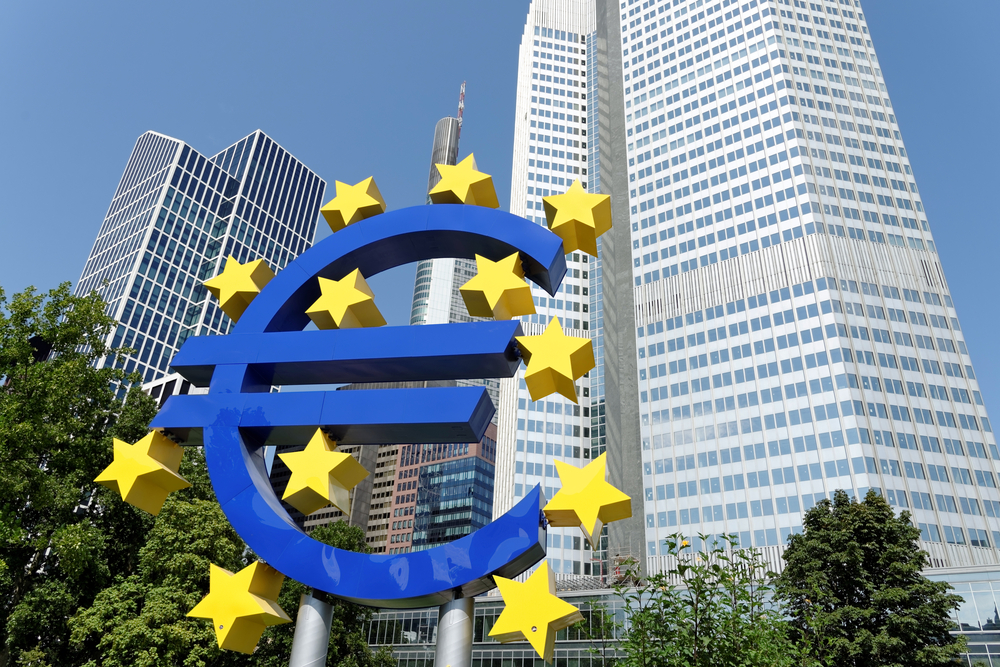Eurozone: The ECB And The Return Of Inflation
As eurozone inflation is on the rise, staying on the sidelines has become less comfortable for the European Central Bank. Instead, expect a further shift towards (real) yield curve control.

Source: Shutterstock
Eurozone inflation in January was just confirmed at 0.9% year-on-year, the highest level since February last year. Core inflation stood at 1.4% YoY. Higher energy prices, some supply-side disruptions and bottlenecks as well as higher prices for services are the drivers behind higher headline inflation in the eurozone. The divergence across eurozone countries is high, with headline inflation ranging from -2.4% YoY in Greece to 1.6% YoY in Germany and the Netherlands - a divergence which doesn’t make the ECB’s life any easier.
Inflation - the only way is up
Looking ahead, for eurozone inflation, the only way is up. In fact, there will be a series of one-off factors pushing up headline inflation. In the short run, it will mainly by higher energy prices driving this. But when economies reopen, price markups in sectors most hit by the lockdowns will also add to upward pressure on inflation. In addition, the full swing of the German VAT reversal will only unfold in the second half of the year. Taking all these factors into account, headline inflation could eventually even touch the 2% level this year. Remember that in the December projections, the ECB had forecast headline inflation at 0.4% in the first quarter, accelerating to 1.5% in the fourth quarter - a highly unlikely outcome. Instead, it looks as if this year will be the first year in a long while in which the ECB’s inflation projections will turn out to have been too pessimistic, rather than too optimistic.
However, interpreting this year’s inflation data will not be an easy task. It is complicated, not only due to the series of one-off factors but also due to two technical measuring factors. The first is the fact that the pandemic has changed consumption patterns, which are relevant in determining the weightings in the inflation basket. These weights are updated once every year. For 2021, this means that changes in consumption patterns due to the pandemic will be applied, leading to a varying and messy comparison of pandemic-driven consumption patterns with lockdown situations but also later this year with returning normal consumption patterns. The other factor is that there are still goods or services which currently are simply not available due to the lockdowns. As a result, some 13% of the entire inflation measure is still imputed.
(Real) yield curve control with words
Quickly rising headline inflation rates, which are mainly driven by technical one-off factors, pose a new challenge for the ECB, as can be witnessed in bond markets. To understand the ECB’s reaction function to higher inflation (expectations) and yields, it is important to look at the nature of these inflation developments. In fact, there are two types of inflation, the “cost-push” inflation, driven by temporary one-off factors, and the “demand-pull” inflation, with too much money chasing too few goods as a sign of an overheating economy. “Cost-push” inflation can actually be considered as being deflationary, reducing purchasing power. This is why the ECB will look through these kind of temporary and technical inflations spurts. It is the “demand-pull” inflation which the ECB will monitor closely. Particularly in the eurozone, there are no signs yet of such a demand-driven inflation pick-up. Admittedly, we will only know by the end of the year whether one-off drivers remain one-offs or have led to a more permanent increase in inflationary pressure.
For the time being, the ECB will focus on taming any inflationary expectations and speculation with words. However, the difficulty of this challenge is reflected in the fact that over the last few weeks the ECB has come up with a series of verbal interventions, warning against premature normalising of monetary policy, focusing on financing conditions, talking about real rates and finally emphasising nominal bond yields. All of this makes it harder to read the ECB’s reaction function but at least it shows that the ECB has become aware of its newest challenges. In our view, the ECB could eventually move towards a kind of (real) yield curve control. Until then, one thing is clear, staying on the sidelines has become less comfortable for the central bank in recent days.
Disclaimer: This publication has been prepared by ING solely for information purposes irrespective of a particular user's means, financial situation or investment objectives. The information ...
more


